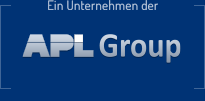Research
Tribology
Since the service life of technical products is often determined by wear, optimising tribological systems offers good potential for economically optimising manufacturing and operations. We have developed an energy-focused approach for analysing the interactions between friction and wear: the tribomutation model.
Tribomutation is caused by mechanical interactions between components where friction is created. The effect is primarily induced on a nanometer scale.
Changes occur on the surface of the material due to the mechanical energy applied when friction occurs and is converted into heat. The element composition, grid structure of the material and its surface chemistry change in the nanometer range. This, in turn, affects friction, meaning that friction and material affect one another.
Practical application
We use the results of our development work, for instance, to optimise production, during run-in processes and when developing lubricants.
By combining radionuclide wear measurements and component and damage analysis, we have tools allowing us to expertly select process parameters during final component finishing.
Important current questions we are focusing on include the influence of diesel and petrol soot in motor oil on mechanical processes in the near-surface areas of components and their effects on the function of the overall tribological system.
Questions related to frictional power losses in combustion engines and their components are also becoming more important. We complete testing on both operating and towed complete engines and component test benches and model tribometers.


